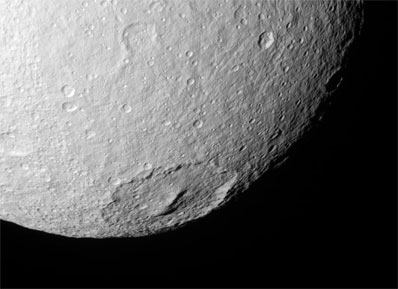
Spaceflight Now +

|

|

|

|

Premium video content for our Spaceflight Now Plus subscribers.

Discovery ride along!
 A camera was mounted in the front of space shuttle Discovery's flight deck looking back at the astronauts during launch. This video shows the final minutes of the countdown and the ride to space with the live launch audio included. The movie shows what it would be like to launch on the shuttle with the STS-121 crew. A camera was mounted in the front of space shuttle Discovery's flight deck looking back at the astronauts during launch. This video shows the final minutes of the countdown and the ride to space with the live launch audio included. The movie shows what it would be like to launch on the shuttle with the STS-121 crew.

 PLAY PLAY

Shuttle from the air
 A high-altitude WB-57 aircraft flying north of Discovery's launch trajectory captures this incredible aerial footage of the space shuttle's ascent from liftoff through solid rocket booster separation. A high-altitude WB-57 aircraft flying north of Discovery's launch trajectory captures this incredible aerial footage of the space shuttle's ascent from liftoff through solid rocket booster separation.

 PLAY PLAY

Launch experience
 This is the full launch experience! The movie begins with the final readiness polls of the launch team. Countdown clocks then resume ticking from the T-minus 9 minute mark, smoothly proceeding to ignition at 2:38 p.m. Discovery rockets into orbit, as seen by ground tracker and a video camera mounted on the external tank. About 9 minutes after liftoff, the engines shut down and the tank is jettisoned as the shuttle arrives in space. This is the full launch experience! The movie begins with the final readiness polls of the launch team. Countdown clocks then resume ticking from the T-minus 9 minute mark, smoothly proceeding to ignition at 2:38 p.m. Discovery rockets into orbit, as seen by ground tracker and a video camera mounted on the external tank. About 9 minutes after liftoff, the engines shut down and the tank is jettisoned as the shuttle arrives in space.

 PLAY PLAY

 Become a subscriber Become a subscriber
 More video More video

|

|

|

|
|

|

Toward Melanthius
CASSINI PHOTO RELEASE
Posted: September 1, 2006

Credit: NASA/JPL/Space Science Institute
Download larger image version here
|
Cassini looks into the 245-kilometer (150-mile) wide crater Melanthius in this view of the southern terrain on Tethys. The crater possesses a prominent cluster of peaks in its center which are relics of its formation.
Notable here is a distinct boundary in crater abundance -- the cratering density is much higher in the farthest western terrain (left side of the image) than elsewhere.
North on Tethys (1,071 kilometers, or 665 miles across) is up and rotated 45 degrees to the left.
The image was taken in visible light with the Cassini spacecraft narrow-angle camera at a distance of approximately 120,000 kilometers (75,000 miles) from Tethys and at a Sun-Tethys-spacecraft, or phase, angle of 29 degrees. Image scale is 715 meters (2,345 feet) per pixel.
The Cassini-Huygens mission is a cooperative project of NASA, the European Space Agency and the Italian Space Agency. The Jet Propulsion Laboratory, a division of the California Institute of Technology in Pasadena, manages the mission for NASA's Science Mission Directorate, Washington, D.C. The Cassini orbiter and its two onboard cameras were designed, developed and assembled at JPL. The imaging operations center is based at the Space Science Institute in Boulder, Colo.
|

|

|

|

|



